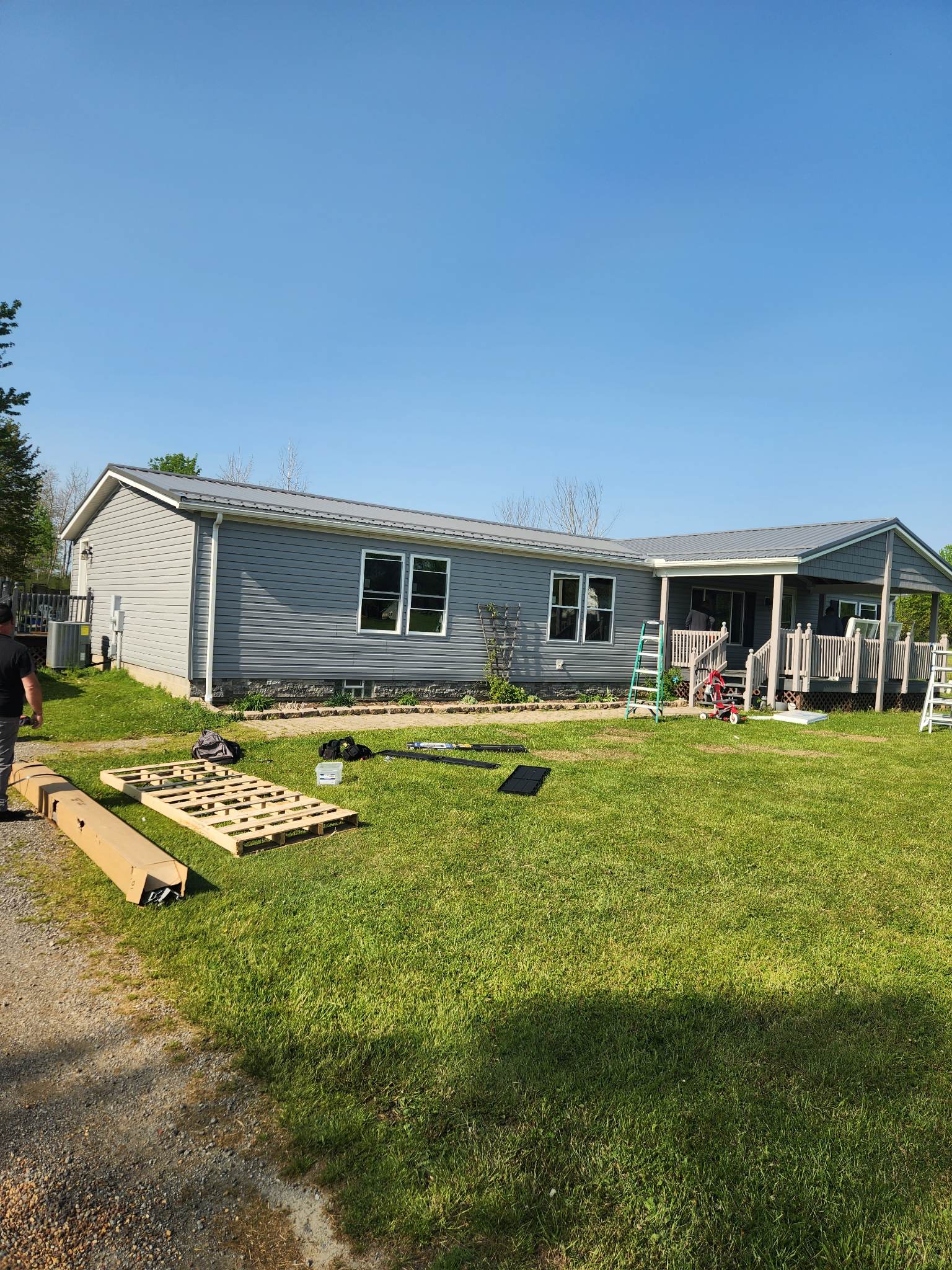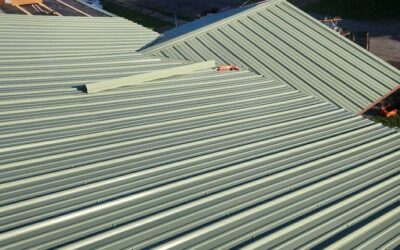What Happens If It Rains While Installing a New Roof?
A roof is one of the most important components of your home, providing protection from the elements and keeping your home secure and comfortable. When it’s time for a roof replacement, it’s critical that the installation process is carried out properly to ensure the longevity and effectiveness of your new roof. However, what happens if it rains while installing a new roof? Is it safe for roofers to work during the rain? Can the installation process be completed successfully, or does the weather affect the quality of the final result?
In this comprehensive blog, we’ll discuss what happens when it rains during roof installation, the risks associated with installing a roof in wet weather, how roofers prepare for rain, and what the roof replacement process typically looks like. We’ll also explore why it’s important to understand these factors to ensure your new roof is installed properly and safely.
Can Roofers Install a Roof When It’s Raining?
Many homeowners wonder if roofers can install a new roof during rain. The short answer is no—installing a roof during rain is not ideal, and in many cases, it can be unsafe and counterproductive. While roofing professionals are skilled and experienced, rain introduces several complications that make the installation process more difficult and risky.
1. Safety Concerns for Roofers
The most important factor in roofing is safety. Wet surfaces become slippery, and working on a wet, sloped roof increases the likelihood of falls and accidents. Roofers use ladders and scaffolding to reach the roof, and when rain is added to the mix, the surfaces they walk on become dangerous. The risk of falling is heightened, and this is why most professional roofing contractors avoid working in the rain when possible.
Additionally, roofing materials such as shingles or metal panels can become more difficult to handle and install correctly when wet. In some cases, the rain can cause roofers to be distracted or move cautiously, slowing down the process and increasing the chances of mistakes.
2. Damage to Roofing Materials
Roofing materials such as asphalt shingles, underlayment, and flashing are specifically designed to withstand outdoor elements, but they must be installed under dry conditions to function properly. If rain falls while the roof is being installed, the materials may not adhere properly, leading to future issues such as poor adhesion, gaps in the layers, or leaks. Additionally, water can get trapped under layers of shingles or flashing, causing the materials to shift or warp once the rainwater evaporates.
Furthermore, if rainwater enters your home during the installation process, it could cause water damage to the interior of your home. This can lead to mold growth, ruined insulation, and other costly repairs. Roofers work hard to avoid such scenarios by waiting for dry weather conditions when possible.
Your Roof Won’t Be Installed Correctly
Roofing contractors typically follow a detailed, step-by-step process to ensure that your roof is properly installed and sealed. Rain complicates this process in several ways, making it more difficult for the contractors to achieve the desired result. Here are a few reasons why roofing may not be installed correctly when it rains:
1. Shingles and Underlayment Will Not Adhere Properly
One of the most important parts of roof installation is the adhesion of the roofing materials. For asphalt shingles, underlayment, and other materials to bond effectively, they need to be applied in dry conditions. When rain is present, the water can prevent the adhesive from forming a strong bond between layers, which can lead to leaks and premature roof failure.
Additionally, when shingles or underlayment get wet, they may not lie flat on the surface of the roof. This can create gaps and spaces where water can seep in, leading to leaks over time. Without proper adhesion, your roof will not perform as intended, and its lifespan could be significantly shortened.
2. Inability to Properly Seal the Roof
Roofing materials such as flashing, seals, and vents need to be properly sealed to prevent water from entering your home. Rainwater can interfere with this sealing process, especially if the materials are already wet when they are applied. In some cases, rain can wash away or dilute the sealant, leading to areas that aren’t fully sealed. This can leave your home vulnerable to leaks, mold growth, and water damage.
It’s Not Safe to Install a New Roof in the Rain
Roof installation is a challenging and intricate process, and rain makes it even more dangerous. Here are some specific reasons why it’s not safe to install a new roof in the rain:
1. Slippery Roof Surface
A wet roof is slippery, and the risk of falls increases significantly in rainy weather. Roofing materials, such as shingles and metal panels, are designed to be installed under dry conditions to prevent slipping. If it’s raining during the installation process, roofers may struggle to maintain their footing, which increases the risk of accidents.
Additionally, ladders and scaffolding used to access the roof are much more dangerous when wet, and roofers may be more susceptible to slipping off the ladder. Safety should always be the primary concern during a roofing project, and working in the rain presents unnecessary risks.
2. Electrical Hazards
Roofing often involves working around electrical systems, such as solar panel wiring or roof-mounted HVAC units. Wet conditions increase the risk of electrical shorts, which can be dangerous for both the workers and your home. Since rainwater is conductive, it can cause electrical components to malfunction or even lead to fires if proper precautions are not taken.
What Happens If It Starts Raining While Installing Your New Roof?
Even if roofers start the installation process in good weather, there’s always the risk that rain could start mid-job. So, what happens if it rains while your roof is being installed? Here’s what you can expect:
1. Temporary Protection Measures
If rain starts unexpectedly, roofers will take temporary protective measures to shield your roof from water damage. This can include laying down tarps or plastic sheeting over the exposed sections of the roof. These measures will help prevent rainwater from getting into the attic and causing interior damage.
2. Delays and Rescheduling
If the rain persists, the roofers will likely need to delay the installation process until conditions improve. This can lead to a disruption in the project timeline, and your roof may remain partially exposed until the rain stops. Depending on how long the rain lasts, it could take a few hours or a few days before work can resume.
3. Potential for Damage to Roofing Materials
As mentioned earlier, wet roofing materials can warp, shift, or lose their adhesive properties. If rain continues during installation, the materials that have already been laid down may need to be replaced. This can increase the overall cost of your roof replacement and delay the project.
How Should a Roofer Prepare for Rain During the Roof Replacement Process?
Experienced roofers understand the potential risks of rain during a roof replacement and are prepared to handle such situations. Here’s how they prepare for rain during the roofing process:
1. Check the Weather Forecast
Before beginning any roofing project, roofers will carefully check the weather forecast to ensure that rain won’t disrupt the process. If rain is expected, they may reschedule the project to avoid starting work on a wet roof. However, if the weather is unpredictable, roofers may need to make contingency plans in case rain starts unexpectedly.
2. Use Temporary Protective Measures
Roofers are prepared to quickly cover the roof with tarps or plastic sheeting to protect it from rain. This temporary covering helps prevent water from entering the attic or causing damage to the materials already installed.
3. Work in Phases
Roofing contractors may choose to work in phases to minimize the amount of roof that is left exposed to the elements. For example, they may focus on installing underlayment or flashing first, ensuring that the roof is adequately sealed before moving on to other layers.
4. Postpone Work if Necessary
If rain becomes persistent, roofers will prioritize safety and halt the work. The process will be rescheduled for a time when the weather conditions are favorable for installation. Roofers will typically reschedule the project to avoid long-term complications caused by wet materials.
What Does the Entire Roof Replacement Process Look Like?
Now that we understand the challenges that rain poses during roof installation, let’s take a look at what the roof replacement process typically involves, under ideal dry conditions:
1. Inspection and Preparation
The first step in a roof replacement is a thorough inspection of the existing roof. The roofing contractor will assess the condition of the current roof and determine if any structural repairs are needed before the new roof can be installed. Once the existing roof is ready, the crew will prepare the area by setting up ladders, scaffolding, and protective coverings for landscaping and other parts of the property.
2. Removing the Old Roof
The next step is to remove the old roofing materials. This involves stripping off the old shingles, underlayment, and flashing to expose the roof deck. If the roof is damaged, the roof deck may also need to be repaired or replaced. Once the old roofing materials are removed, the roof deck will be inspected for any damage that needs to be addressed.
3. Installing Underlayment
After the deck is prepared, the roofer will install underlayment, a waterproof material that provides an additional layer of protection against water infiltration. The underlayment is applied in overlapping layers to ensure complete coverage.
4. Installing New Roofing Materials
With the underlayment in place, the roofer will begin installing the new shingles, tiles, or metal panels. This step includes ensuring that each layer is properly aligned and secured to prevent leaks and future damage.
5. Final Touches and Cleanup
Once the roofing materials are installed, the roofer will install flashing around chimneys, vents, and other protrusions. The roof will then be thoroughly inspected to ensure that everything is properly sealed and secure. The crew will also clean up any debris and materials from the installation process.
Conclusion
While it may seem tempting to continue working during a rainstorm, installing a roof in the rain can cause significant problems, including safety risks, damage to materials, and improperly installed roofing systems. Roofers are trained to handle such situations by using protective measures, working in phases, and rescheduling the project as needed to ensure the quality of the installation.
If you’re in need of roof replacement, it’s important to choose a professional roofing contractor who understands the challenges posed by weather and who can ensure that your new roof is installed correctly. Make sure to check the weather forecast and work with a reliable contractor who will prioritize your safety and the quality of your roof.
 (440) 307-2060
(440) 307-2060


